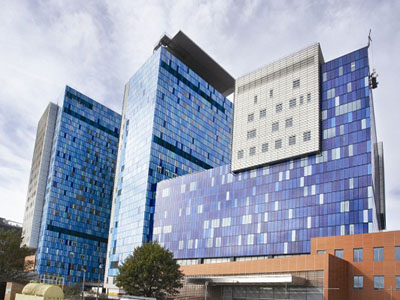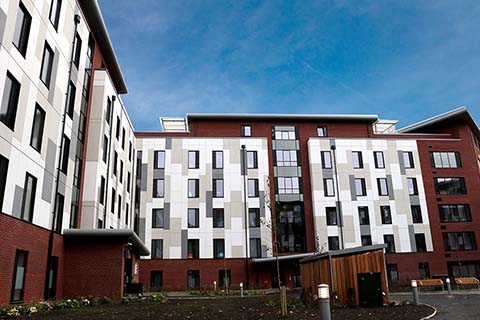The University of Leeds embarked on an ambitious £520m five-year programme of works to transform its entire campus to support its vision for increasing knowledge and opportunity with a focus on world-leading research, collaborative industry partnerships and further enhancing the student experience for 1,000+ students who come from 70+ countries to study in the building.
Mirroring the university’s collaborative approach, principal contractor, Galliford Try and leading M&E (mechanical and electrical) specialist contractor, SES Engineering Services (SES), recently completed work on the £38m refurbishment and remodelling of the School of Chemical and Process Engineering, marking completion of the largest single project in the University’ programme of improvements to be undertaken to date.
By incorporating state-of-the-art facilities into the iconic 60s building, the university will achieve ambitious growth in academic activity. Briefly, the building comprises a suite of three purpose-built laboratories for research using radioactive materials, with space for pilot scale rigs, bench top chemical experiments and high-spec analytic equipment.
The new photonics laboratory hosts ultrafast laser plasma implantation equipment. This not only allows research to be progressed it also supports the use of facilities for commercial applications to be undertaken.
Traditionally, refurbishments start with a complete strip-out of the existing services however, as the building had to remain live at all times this was not possible. Following numerous design team meetings with various stakeholders, SES developed a strategy to install the new plant room facilities providing a betterment of 12 months on contractual programme. Whilst this increased the upfront workload it proved beneficial to the latter delivery phases. More importantly it prevented cross-contamination from corrosion of the old services.
With 150 operatives on site at any one time, the project team had to ensure that it could meet the start and finish dates set out for each phase, while at the same time giving the university the four-week notice period for isolation of existing M&E services, this often necessitated SES to work unsociable hours, during the night and/or over a weekend.
“Without doubt, the refurbishment of the School of Chemical and Process Engineering was complex on many levels. The building fabric and services threw up various surprises to the team coupled with changes in research and recruitment forced a high volume of changes by the university, to ensure the remodelled building would help us to achieve what we’d set out to achieve the client and contractor’s design team pulled together to resolve the issues jointly and applied a can-do attitude by both SES and Galliford Try.
“I also believe that the timely completion of the project would not have been reached were it not for the open, communicative and collaborative approach adopted by both contractors at the outset and their willingness and ability to respond to the changes without breaking stride and they are to be commended for that.
“I’m delighted to say we have a building that everyone involved can be proud of.”
Other Case Studies

Royal London Hospital
In less than five weeks, SES Engineering Services (SES) and Wates Construction delivered a full fit-out of floors 14 and 15 at Royal London Hospital, to create additional capacity for more than 170 intensive care beds to support the COVID-19 pandemic.

University of Hull
As the student accommodation sector continues to be a source of new work for leading national engineering specialist SES Engineering Services (SES) who were appointed by main contractors Sewell Construction completed a £6.5m contract at the University of Hull.

GSK Aseptic Manufacturing Facility - Q Block
SES worked to a detailed schedule of works to install all mechanical and electrical (M&E) building services, ensuring that there was minimum disruption to the live manufacturing site which completed in January 2020.

